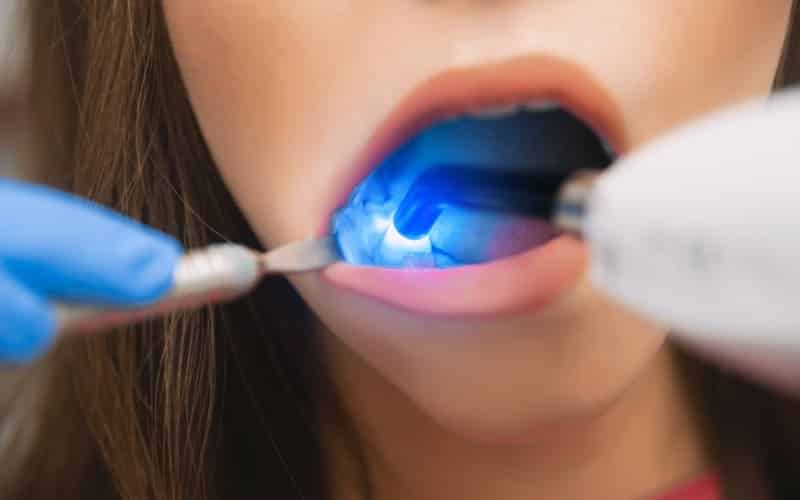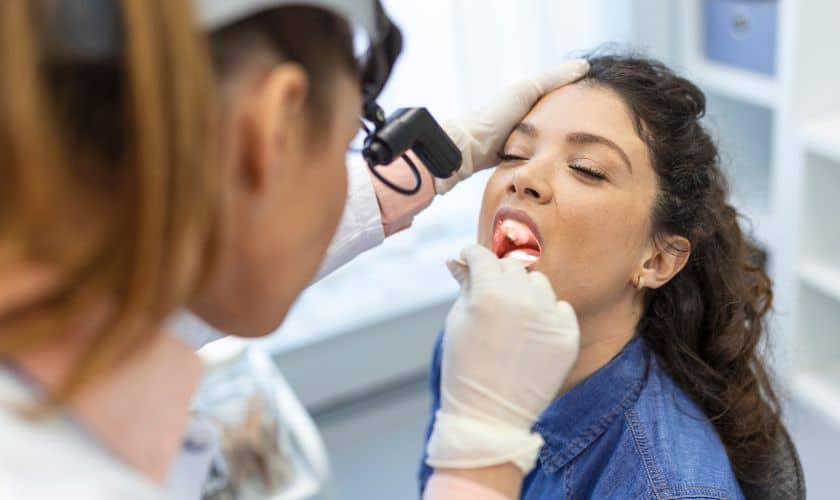Did you know that oral cancer accounts for 2-4% of all cancers worldwide? Early detection is paramount as survival rates drastically improve when diagnosed in the early stages. Enter VELscope, a cutting-edge tool revolutionizing oral cancer screening. Unlike traditional methods, VELscope utilizes fluorescent light to detect abnormal tissues, often invisible to the naked eye. Its ability to identify precancerous and cancerous lesions early on can significantly enhance patient outcomes. Embracing this technology not only improves diagnostic accuracy but also empowers clinicians to intervene promptly, potentially saving lives.
What is the VELscope?
The VELscope is a cutting-edge tool used for oral cancer screening, especially for spotting abnormal tissues in the mouth. It utilizes fluorescence technology, emitting blue light to identify potential areas of concern. Healthy tissues emit a faint green fluorescence, while abnormal ones, like those linked to oral cancer or precancerous lesions, appear darker and irregular. It’s crucial to understand that while the VELscope improves abnormality detection, it isn’t a standalone diagnostic tool. Instead, it complements screening methods, helping clinicians pinpoint areas needing further examination or biopsy.
Potential Benefits of the VELscope For Oral Cancer Screening
The VELscope offers several potential benefits in oral cancer screening:
1. Early Detection of Precancerous and Cancerous Lesions: By utilizing fluorescence technology, the VELscope can identify abnormalities in oral tissues at a much earlier stage than traditional methods. This early detection is critical in preventing the progression of precancerous lesions into full-blown cancer. With timely intervention, patients have a significantly higher chance of successful treatment and improved outcomes.
2. Improved Visualization Compared to Traditional Methods: Unlike visual examination alone or traditional screening methods, such as white light examination, the VELscope provides enhanced visualization of oral tissues. It can detect subtle changes in tissue fluorescence that may indicate the presence of abnormal cells, even in areas that may appear normal under regular lighting conditions. This heightened sensitivity increases the likelihood of identifying potentially cancerous lesions that might otherwise go unnoticed.
Address limitations of the VELscope For Oral Cancer Screening
While the VELscope offers significant advantages in oral cancer screening, it’s important to acknowledge its limitations:
1. Lack of Definitive Results: The VELscope is not a diagnostic tool but rather a screening device. While it can identify areas of abnormal fluorescence that may indicate the presence of precancerous or cancerous lesions, a biopsy is necessary to confirm the diagnosis definitively. This means that even if suspicious areas are identified with the VELscope, further testing is required to confirm whether they are indeed cancerous or precancerous.
2. Potential for False Positives: Due to its sensitivity, the VELscope may sometimes detect areas of abnormal fluorescence that are not indicative of cancer or precancerous lesions. This can lead to false positives, potentially causing unnecessary anxiety for patients and leading to unnecessary biopsies or procedures. Clinicians must carefully evaluate VELscope findings in conjunction with other clinical factors to minimize the risk of false positives.
3. Unclear Effectiveness in Detecting Early-Stage Cancers in General Population: While studies have demonstrated the efficacy of the VELscope in detecting oral abnormalities, many of these studies have focused on high-risk populations, such as individuals with a history of tobacco use or heavy alcohol consumption. Its effectiveness in detecting early-stage cancers in the general population, especially among those without known risk factors, remains less clear. Further research is needed to assess its utility in broader screening programs and among diverse patient populations.
Comparison with Other Screening Methods
When comparing the VELscope with other screening methods for oral cancer, several factors come into play:
1. Visual Examination: Traditional visual examination remains a primary method for oral cancer screening. While it is non-invasive and cost-effective, it relies heavily on the clinician’s subjective assessment and may miss subtle or early-stage lesions that are not readily visible to the naked eye.
2. Toluidine Blue Staining: Toluidine blue staining is another adjunctive method used in oral cancer screening. It involves applying a dye to the oral mucosa, which selectively stains abnormal tissues. However, like visual examination, it lacks specificity and may result in false positives.
3. Oral Brush Biopsy: Oral brush biopsy is a minimally invasive technique used to collect cells from suspicious oral lesions for further analysis. While it provides a definitive diagnosis, it may miss deeper or smaller lesions, and it can be uncomfortable for patients.
Compared to these methods, the VELscope offers several advantages:
1. Enhanced Visualization: The VELscope provides improved visualization of oral tissues by highlighting areas of abnormal fluorescence, which may not be apparent during visual examination alone.
2. Non-invasive: Unlike brush biopsy, the VELscope is non-invasive and does not require tissue collection, making it more comfortable for patients.
3. Real-time Screening: The VELscope allows for real-time screening during routine dental exams, enabling immediate identification of suspicious areas for further evaluation.
Alternatives and Considerations
Conventional oral cancer screening involves visual inspection and palpation by clinicians, which can overlook early lesions. Combining these methods with adjunctive tools like the VELscope enhances accuracy. The VELscope’s fluorescence highlights hidden abnormalities, aiding in the early detection of precancerous and cancerous lesions. Its integration into routine dental exams allows for a more comprehensive assessment, leading to timely intervention and improved patient outcomes.
Wrap Up!
The VELscope’s accuracy in detecting oral abnormalities, including precancerous and cancerous lesions, is invaluable in early intervention. Its fluorescence technology enhances visualization, aiding in the identification of suspicious areas missed by traditional methods. For personalized advice on oral cancer screening, consult Oak Forest Dentist. Their expertise ensures a comprehensive approach tailored to your needs. Don’t wait for symptoms; prioritize your oral health today! Schedule a screening with Oak Forest Dentist and take proactive steps towards a healthier future.


